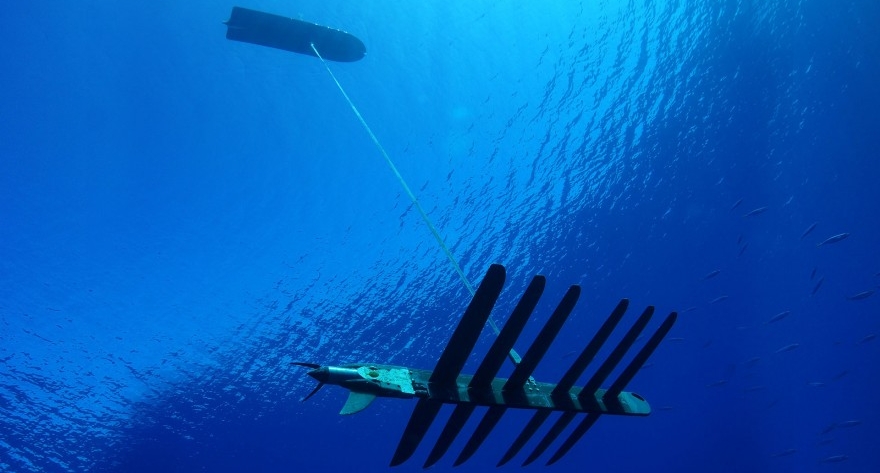Liquid Robotics' Wave Glider makes advances in under water to satellite communication
Created by Boeing subsidiary Liquid Robotics, a black device resembling a surfboard known as the Wave Glider is making commendable advances in data transmissions from undersea vehicles to satellites.

December 14, 2017: Created by Boeing subsidiary Liquid Robotics, a black device resembling a surfboard known as the Wave Glider is making commendable advances in data transmissions from undersea vehicles to satellites.

According to the Boeing web site, this maritime innovation was originally intended to record the songs of migrating whales. When integrated with Boeing's advanced sensors for defense applications, the Wave Glider can locate undersea vehicles at substantial distances, hunt for mines, monitor land radar, and gather and relay data to other systems, all while operating on solar and wave power for months at a time.
In 2017, the Wave Glider joined Boeing's growing lineup of autonomous products as part of Defense, Space & Security's newly formed Autonomous Systems business. Boeing views the unmanned surface vehicle as a vital middle step to creating seabed-to-space communications, a link needed to connect data transmissions from undersea vehicles to satellites.

"It's a hidden treasure. There's a lot going on under the sea," said Jim Bray, Boeing autonomous systems technology integrator in St. Louis.
The website further says, covered with fiberglass panels and small antennas topside and tethered to a wing-like propulsion system beneath it called a sub, the Wave Glider communicates by low-Earth-orbit satellite through a command-and-control unit and surface radio modem, similarly to someone sending a text message by smart phone.

"It's revolutionary stuff," said Scott Willcox, Liquid Robotics technology lead. "It's like reinventing the sail %u2014 fundamentally, it's a new way to get around the ocean. What you can do with it is almost limitless."
In Ventura, Calif., in July, seven months after Boeing acquired Liquid Robotics, the companies teamed to test new Wave Glider capabilities in the ocean that would be presented to a customer for the first time. The testing demonstrated how transponders placed on the ocean floor by the Wave Glider conceivably could provide an oceanic GPS. An unmanned undersea vehicle in need of updating its location could use these underwater acoustics to determine where it is and never have to surface.
Brian Phelps, a Boeing systems analyst from Huntington Beach and a former US Navy senior chief who usually works on the Echo Voyager, Echo Seeker and Echo Ranger, was on loan for the testing.


